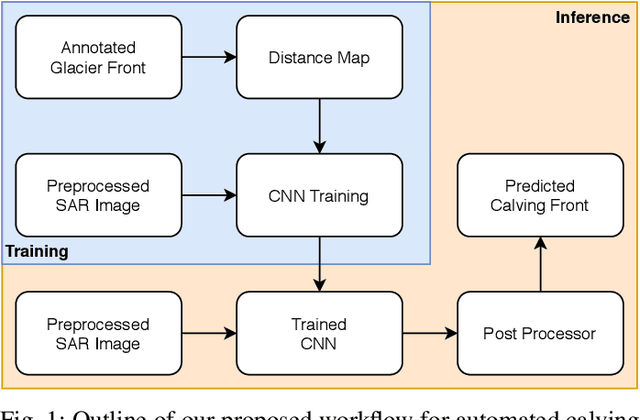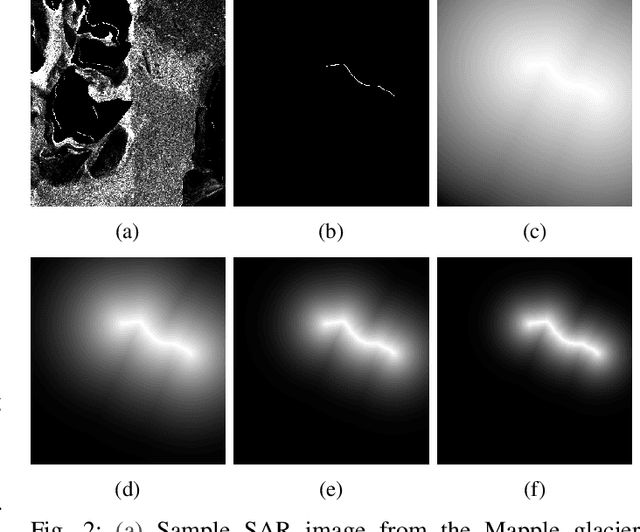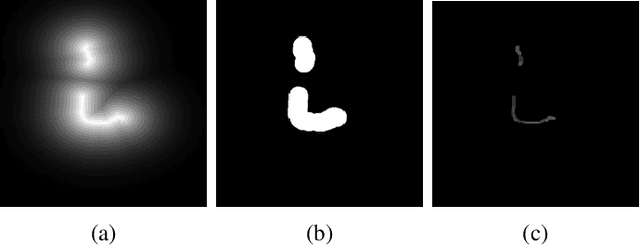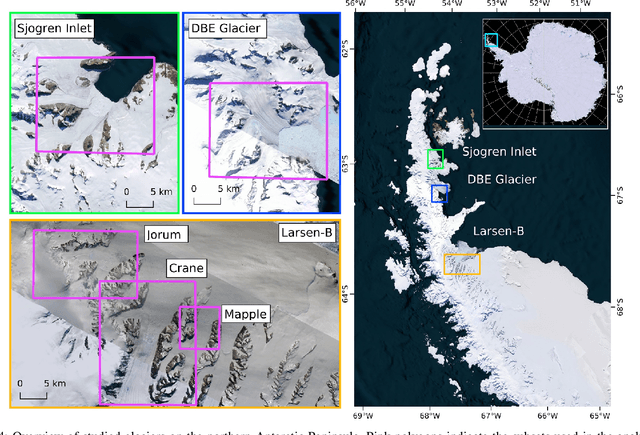Pixel-wise Distance Regression for Glacier Calving Front Detection and Segmentation
Paper and Code
Mar 09, 2021



Glacier calving front position (CFP) is an important glaciological variable. Traditionally, delineating the CFPs has been carried out manually, which was subjective, tedious and expensive. Automating this process is crucial for continuously monitoring the evolution and status of glaciers. Recently, deep learning approaches have been investigated for this application. However, the current methods get challenged by a severe class-imbalance problem. In this work, we propose to mitigate the class-imbalance between the calving front class and the non-calving front class by reformulating the segmentation problem into a pixel-wise regression task. A Convolutional Neural Network gets optimized to predict the distance values to the glacier front for each pixel in the image. The resulting distance map localizes the CFP and is further post-processed to extract the calving front line. We propose three post-processing methods, one method based on statistical thresholding, a second method based on conditional random fields (CRF), and finally the use of a second U-Net. The experimental results confirm that our approach significantly outperforms the state-of-the-art methods and produces accurate delineation. The Second U-Net obtains the best performance results, resulting in an average improvement of about 21% dice coefficient enhancement.
 Add to Chrome
Add to Chrome Add to Firefox
Add to Firefox Add to Edge
Add to Edge